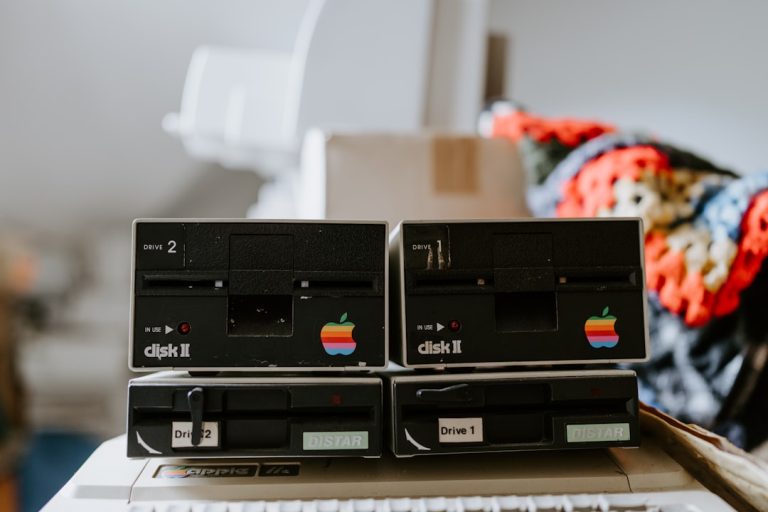
Video editing is a multifaceted process that transforms raw footage into a polished final product. At its core, video editing involves selecting, arranging, and modifying video clips to create a coherent narrative or visual experience. This process can encompass a variety of tasks, including cutting unnecessary scenes, adding transitions, and incorporating audio elements.
The primary goal of video editing is to enhance the storytelling aspect of the footage, ensuring that the final product resonates with its intended audience. To grasp the fundamentals of video editing, one must familiarize themselves with key concepts such as timeline management, clip organization, and the importance of pacing. The timeline serves as the backbone of any editing software, allowing editors to visualize the sequence of clips and make adjustments as needed.
Understanding how to manipulate this timeline effectively is crucial for maintaining a smooth flow in the narrative. Additionally, editors must learn to categorize and label their clips efficiently, which can save significant time during the editing process. Pacing, on the other hand, refers to the rhythm of the video; it dictates how quickly or slowly scenes transition from one to another, influencing the viewer’s emotional response.
Key Takeaways
- Video editing involves manipulating and rearranging video shots to create a new work.
- Choose the right software that suits your needs and budget, such as Adobe Premiere Pro or Final Cut Pro.
- Utilize transitions and effects to create a seamless and visually appealing video.
- Master color correction and grading to enhance the overall look and feel of your video.
- Incorporate sound design to create impactful and engaging videos.
Choosing the Right Software for Your Needs
Beginner-Friendly Options
For novices, programs like iMovie or Windows Movie Maker provide easy-to-use interfaces and essential features that facilitate a smooth learning curve.
Advanced Editing Software
versely, more advanced editors may gravitate towards software such as Adobe Premiere Pro, Final Cut Pro X, or DaVinci Resolve. These programs offer a comprehensive suite of features that cater to professional needs, including multi-camera editing, advanced color grading tools, and extensive audio manipulation capabilities.
Key Considerations
When choosing software, it is essential to consider factors such as compatibility with your operating system, the learning curve associated with the program, and whether it supports the specific formats you intend to work with. Additionally, many of these advanced tools offer trial versions, allowing users to explore their functionalities before committing to a purchase.
Utilizing Transitions and Effects for Seamless Visuals

Transitions and effects play a pivotal role in enhancing the visual storytelling of a video. Transitions are used to move from one scene to another smoothly, guiding the viewer’s eye and maintaining engagement. Common types of transitions include cuts, fades, wipes, and dissolves.
Each type serves a different purpose; for instance, a simple cut can create a sense of urgency or immediacy, while a fade might evoke a more reflective or emotional tone. Understanding when and how to use these transitions effectively can elevate the overall quality of the video. Effects, on the other hand, can add depth and creativity to your project.
They range from simple enhancements like brightness adjustments to more complex visual effects such as slow motion or green screen applications. For example, using slow motion can emphasize a dramatic moment in a narrative, allowing viewers to absorb the significance of an action or emotion. However, it is crucial to use effects judiciously; overusing them can distract from the story rather than enhance it.
A well-placed effect or transition can create a seamless flow between scenes and maintain viewer interest throughout the video.
Mastering Color Correction and Grading
| Metrics | Value |
|---|---|
| Number of Lessons | 20 |
| Course Duration | 10 hours |
| Number of Quizzes | 5 |
| Number of Assignments | 3 |
Color correction and grading are essential components of video editing that significantly influence the mood and aesthetic of a project. Color correction involves adjusting the colors in your footage to ensure consistency across different shots. This process may include correcting exposure issues, balancing white levels, and fixing color casts that may have occurred during filming.
For instance, if one shot appears overly warm due to lighting conditions while another is cooler in tone, color correction can help unify these discrepancies for a more cohesive look. Once color correction is complete, color grading takes center stage. This process involves applying creative color adjustments to achieve a specific visual style or mood.
For example, a filmmaker might choose a desaturated color palette for a somber narrative or vibrant hues for an upbeat promotional video. Tools within editing software allow for precise control over color wheels and curves, enabling editors to manipulate shadows, midtones, and highlights independently. Mastering these techniques not only enhances visual appeal but also reinforces the emotional undertones of the story being told.
Incorporating Sound Design for Impactful Videos
Sound design is an often-overlooked aspect of video editing that can dramatically affect how viewers perceive a project. The auditory elements of a video—dialogue, sound effects, and music—work in tandem with visuals to create an immersive experience. High-quality sound design can evoke emotions, build tension, or provide context that visuals alone may not convey.
For instance, adding ambient sounds like birds chirping or city traffic can ground a scene in reality and enhance its authenticity. Moreover, music selection plays a crucial role in setting the tone for a video. The right soundtrack can elevate a scene from mundane to memorable by complementing the visuals and reinforcing the narrative arc.
Editors should consider factors such as tempo, genre, and lyrical content when choosing music for their projects. Additionally, sound mixing—balancing dialogue levels with background music and sound effects—is vital for ensuring clarity and preventing any element from overpowering another. A well-executed sound design not only enhances viewer engagement but also contributes significantly to the overall impact of the video.
Advanced Techniques for Dynamic Storytelling

Non-Linear Storytelling: Creating Intrigue and Suspense
As editors become more proficient in their craft, they may explore advanced techniques that enhance storytelling through visual means. One such technique is non-linear storytelling, where events are presented out of chronological order to create intrigue or suspense. This approach can be particularly effective in genres like thrillers or dramas where revealing information gradually keeps viewers on edge.
Maintaining Coherence in Non-Linear Structures
Editors must carefully consider how each scene connects to maintain coherence despite the non-linear structure. This requires a deep understanding of the narrative and its pacing to ensure that the audience remains engaged and invested in the story.
The Power of Montage Sequences
Another advanced technique is the use of montage sequences—rapidly edited clips that convey information or emotions succinctly. Montages can be powerful tools for illustrating character development or summarizing events over time without lengthy exposition. For example, a montage might depict a character’s journey through training or personal growth by showcasing key moments in quick succession. When executed skillfully, these techniques not only captivate audiences but also enrich the narrative by adding layers of meaning and complexity.
Optimizing Workflow and Efficiency in Editing
Efficiency in video editing is paramount for both amateur and professional editors alike. A streamlined workflow can save time and reduce frustration during the editing process. One effective strategy is to establish an organized file structure before beginning an edit.
This includes categorizing footage into folders based on scenes or themes and labeling files clearly for easy access later on. Such organization minimizes time spent searching for clips and allows editors to focus on creativity rather than logistics. Additionally, utilizing keyboard shortcuts within editing software can significantly enhance productivity.
Most programs offer customizable shortcuts that allow editors to perform common tasks quickly without navigating through menus. Familiarizing oneself with these shortcuts can lead to smoother transitions between tasks and ultimately result in faster project completion times. Furthermore, regularly backing up projects and utilizing cloud storage solutions ensures that work is protected against data loss while providing access from multiple devices.
Tips for Creating Professional-Quality Videos
Creating professional-quality videos requires attention to detail and an understanding of industry standards. One fundamental tip is to prioritize high-quality footage; investing in good cameras and lenses can make a substantial difference in the final product’s appearance. Additionally, proper lighting techniques during filming can enhance visual quality significantly—natural light or softbox setups can help achieve flattering results.
Moreover, maintaining consistency in style throughout the video is crucial for professionalism. This includes adhering to specific color schemes, fonts for titles and graphics, and audio levels across different scenes. Consistency helps establish brand identity in promotional videos or series content while ensuring that viewers remain engaged without distraction from abrupt changes in style or quality.
By focusing on these elements—quality footage, effective lighting, and stylistic consistency—editors can elevate their work to meet professional standards while captivating their audience’s attention.
If you are interested in learning more about video editing techniques, you may want to check out the article “10 Tips for Better Video Editing” on sersea.media.
By implementing these tips, you can enhance the quality and impact of your videos, making them more engaging and visually appealing to your audience.
FAQs
What are video editing techniques?
Video editing techniques are the methods and processes used to manipulate and arrange video footage to create a final video product. These techniques can include cutting, trimming, adding transitions, special effects, and audio adjustments.
What are some common video editing techniques?
Some common video editing techniques include cutting and trimming footage, adding transitions between clips, applying color correction and grading, adding text and graphics, incorporating special effects, and adjusting audio levels.
What software is commonly used for video editing?
Some commonly used video editing software includes Adobe Premiere Pro, Final Cut Pro, Avid Media Composer, DaVinci Resolve, and Sony Vegas Pro. There are also free or more basic options such as iMovie and Windows Movie Maker.
What are some tips for effective video editing?
Some tips for effective video editing include planning out the structure of the video beforehand, organizing footage and assets, using keyboard shortcuts to speed up the editing process, paying attention to audio quality, and experimenting with different editing techniques to find the best fit for the project.
How can I learn video editing techniques?
There are many resources available for learning video editing techniques, including online tutorials, courses, and books. Additionally, practicing and experimenting with different editing techniques on your own footage can be a valuable learning experience.


